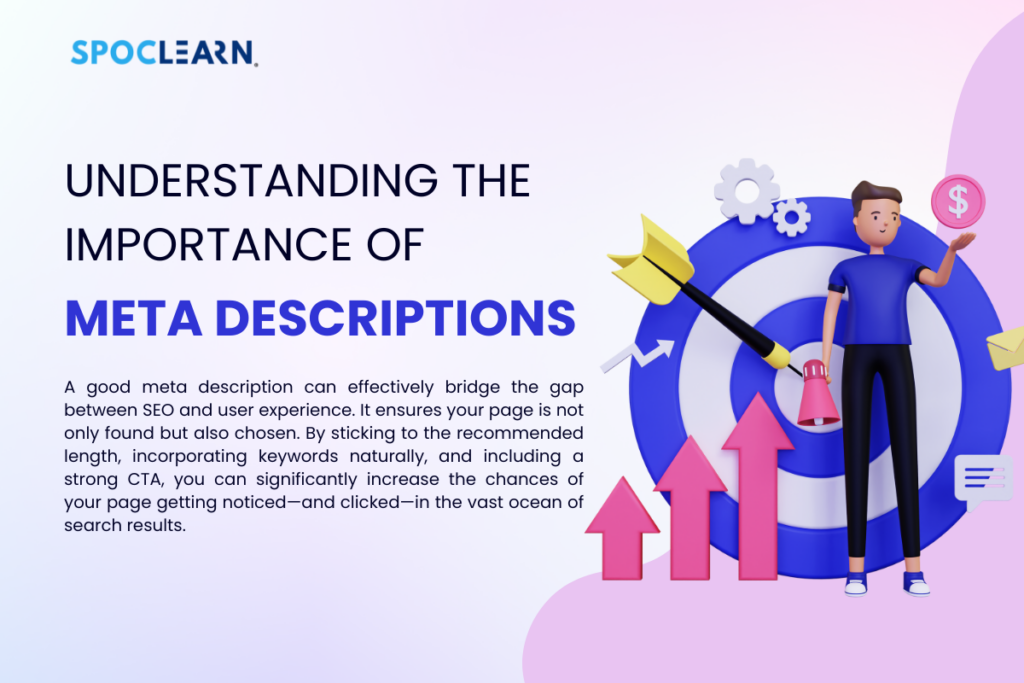Table of Contents
ToggleA meta description is your opportunity to make a first impression on potential visitors. Search engines like Google might not always use the meta description you provide (sometimes they pick text from the page itself if it think it better matches a user’s query), but a well-crafted meta description can increase the chances of clicks from search results.
Best Practices for Crafting Meta Descriptions
1. Length Matters: Keep your meta descriptions concise. The ideal length is between 150-160 characters. This is because search engines truncate snippets longer than this, which means important information might not be displayed.
2. Keyword Integration: Incorporating keywords into your meta description is vital. These are the terms that potential visitors are searching for, so including them can help your page appear more relevant to their queries. However, the integration needs to be natural—stuffing keywords will make the text clunky and could deter clicks.
3. Compelling Call to Action: End your meta description with a compelling call to action (CTA). This could be anything from “Learn more” to “Get started today” or “Discover more.” The goal is to provoke action that makes users want to explore further.
Example of an Effective Meta Description
Let’s say you’re running a blog about healthy eating and you’ve just written a post about low-carb recipes. Here’s how you might craft your meta description:
“Explore our top 10 delicious low-carb recipes that keep you feeling full longer. Dive in now for healthy eating tips and tricks—get cooking today!”
Real-World Experience
In my experience managing content strategies, the pages with the best-performing meta descriptions often tell a story succinctly. They offer enough detail to be enticing but not so much that there’s no reason to click through. For instance, when we revised the meta descriptions for a series of articles about agile methodologies, we made sure each description clearly outlined the problem the article solved and how it could help the reader, using relevant keywords and a direct CTA. The click-through rates improved significantly.
Conclusion
A good meta description can effectively bridge the gap between SEO and user experience. It ensures your page is not only found but also chosen. By sticking to the recommended length, incorporating keywords naturally, and including a strong CTA, you can significantly increase the chances of your page getting noticed—and clicked—in the vast ocean of search results.
